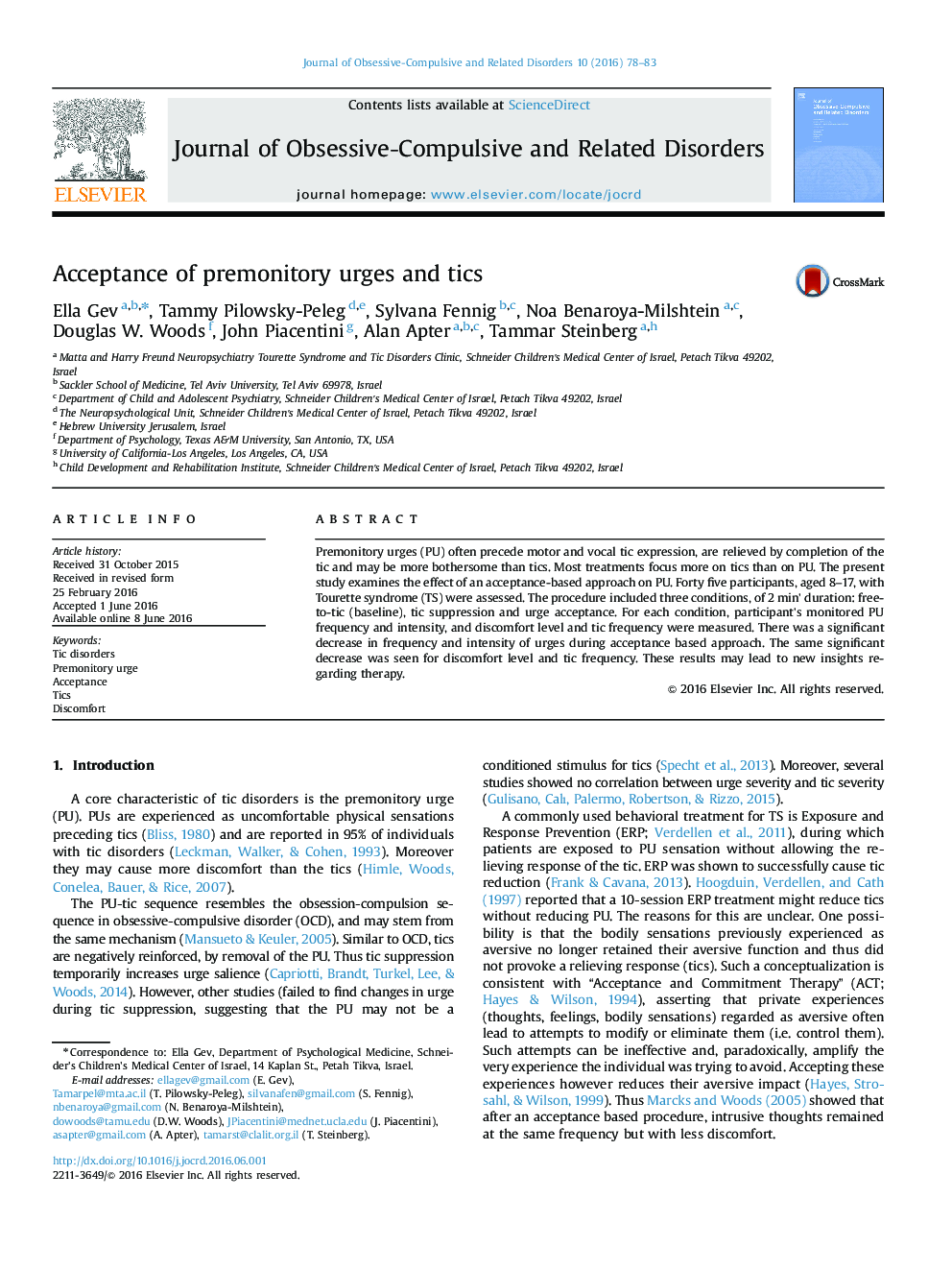| Article ID | Journal | Published Year | Pages | File Type |
|---|---|---|---|---|
| 912176 | Journal of Obsessive-Compulsive and Related Disorders | 2016 | 6 Pages |
•Premonitory urge acceptance reduces urge frequency and intensity.•Premonitory urge acceptance creates less discomfort compared to tic suppression.•Tic suppression increases urge intensity compared to ticking freely condition.•The urge experience can be influenced by cognitive means and relaxation techniques.•Tic frequency is lower during urge acceptance compared to baseline.
Premonitory urges (PU) often precede motor and vocal tic expression, are relieved by completion of the tic and may be more bothersome than tics. Most treatments focus more on tics than on PU. The present study examines the effect of an acceptance-based approach on PU. Forty five participants, aged 8–17, with Tourette syndrome (TS) were assessed. The procedure included three conditions, of 2 min’ duration: free-to-tic (baseline), tic suppression and urge acceptance. For each condition, participant’s monitored PU frequency and intensity, and discomfort level and tic frequency were measured. There was a significant decrease in frequency and intensity of urges during acceptance based approach. The same significant decrease was seen for discomfort level and tic frequency. These results may lead to new insights regarding therapy.
